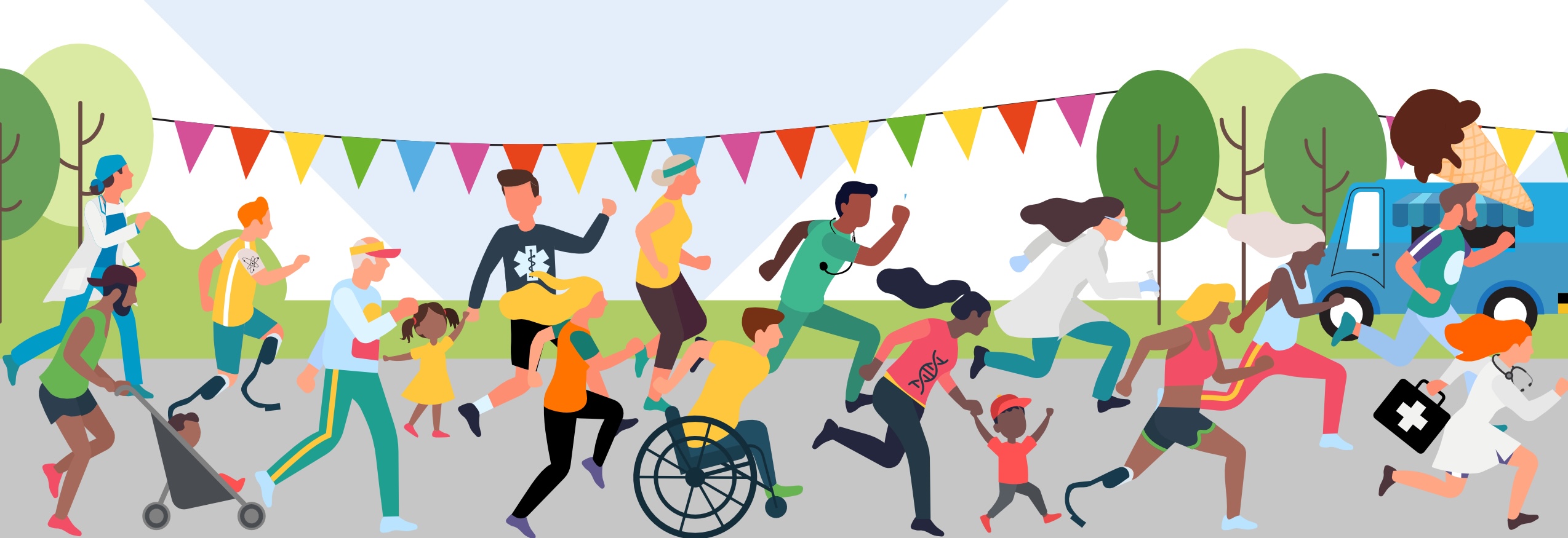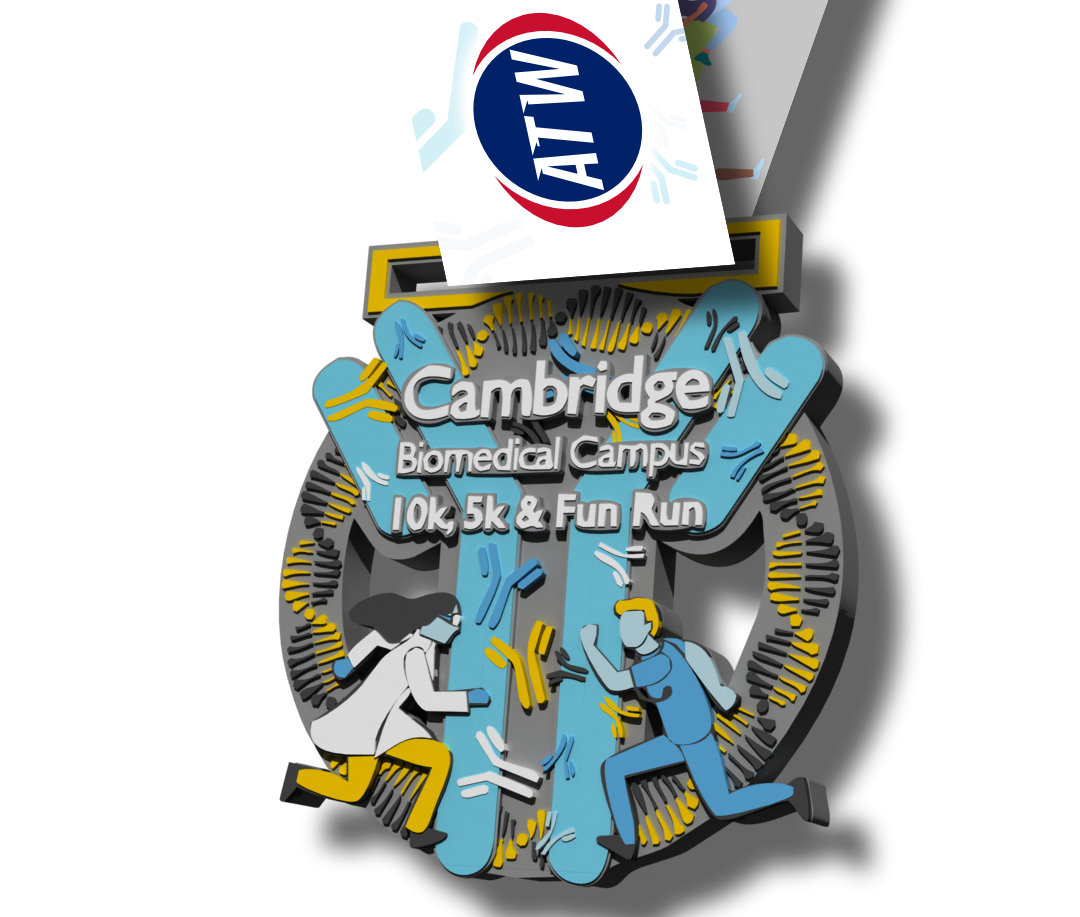Cambridge Biomedical Campus 5k, 10k and Fun Run

Lace up your trainers and join us for an incredible event supporting the British Heart Foundation
Sponsored by the Cambridge Biomedical Campus (CBC) and Prologis, this day promises fun, fitness, and fundraising for a fantastic cause.
What’s on offer?
- 5k Walk: Step out and explore while contributing to a vital cause.
- Children’s 1.2 Mile Fun Run: Perfect for our younger runners to show their spirit!
- 5k or 10k Run: Test your mettle with a challenging yet exhilarating course.
Taking place on a safe, traffic-free, closed-road 3-lap course on the campus, the Children’s Fun Run will create a fantastic opportunity for parents and spectators to cheer on their little champions and capture those special moments to share with friends and family.
As for the chip-timed 5k & two-lap 10k, get ready to embark on a journey through scenic paths and lively streets, soaking in the energetic atmosphere while making strides toward a healthier heart, all against the backdrop of the vibrant Cambridge Biomedical Campus.
This event isn’t just about races: it’s about rallying together to support the groundbreaking work of the British Heart Foundation. Every step and every stride helps in funding vital research and initiatives to fight heart disease. There’s an opportunity for you to get involved and make a donation at the checkout and your details will also be shared with BHF for them to contact you about additional fundraising.
Thanks to the generous support of CBC and Prologis, the Children’s Fun Run is free of charge to all participants, but you are still welcome to make a donation to the BHF.
Mark your calendars and gather your friends and family for a day of fitness, fun, and philanthropy. Join us at the ATW CBC Cambridge 10k and Fun Run, because together, we can make every step count in the fight against heart disease!
Join up with friends and family to purchase a groupsaver ticket (minimum 2 participants, max 10) and save £ on the entry fee.
Find out more and register now
Getting to the start line
We encourage visitors to the Cambridge Biomedical Campus to consider doing so via public transport, walking or cycling as parking is limited. The Campus is served by both the Trumpington or Babraham Road Park and Ride services, as well as guided and on-road buses. For those who wish to drive, the closest car park is Car Park 2 or you can use Car Park 1. You will have to pay to use either car park.
About your medal
Once you have completed the Cambridge Biomedical Campus 5k, 10k or Fun Run, you’ll get your hands on a very cool looking medal. But do you know what the design is based on?

The medal has both a scientist and a healthcare professional to symbolise how different organisations on the Campus work together to deliver breakthroughs and innovation to benefit patients and improve health.
The pattern around the edge is a double helix, representing the structure of DNA, which was discovered in 1953 by Dr Watson and Dr Francis Crick in Cambridge’s Cavendish Laboratory, following on from the experiments of Rosalind Franklin. This breakthrough – pinpointing how our genetic code is passed from parent to child – has led to world-changing advances in many fields, not least in biological research and our understanding and treatment of inherited diseases.
The blue shape in the centre is that of a monoclonal antibody, a technology which was developed right here on the Biomedical Campus at the MRC Lab of Molecular Biology (the LMB), which is behind a third of the world’s new drugs today.
Back in the early 1960s, scientists knew that antibodies played a key role in fighting disease by recognising and latching onto any harmful invaders (antigens), but they didn’t understand how they did it.
Argentinian scientist César Milstein began work at the newly opened Lab of Molecular Biology on what would become the Biomedical Campus. He wanted to understand how the body generates billions of different antibodies and how the immune system selects the right antibody to fight the invader.
The first big breakthrough came in 1974, when César, his colleague Georges Köhler and laboratory technician Shirley Howe found a way to produce large quantities of identical antibodies for lab work. That’s also where the first Nobel Prize comes in: César Milstein and Georges Köhler were awarded the Prize for Medicine in 1982.
But there was a problem. Because the antibodies had been derived from mice, they were difficult to use in human therapeutics because the human immune system had anti-mouse reactions.
In the late 1980s, following in César’s footsteps, Greg Winter and Michael Neuberger also at the LMB, began to explore various solutions to the rejection issue.
Greg developed what’s called the phage display method, which effectively is a way of using genetic engineering to create an artificial immune system that can select the desired human antibodies out of large pools in a test tube.
Together with David Chiswell he founded Cambridge Antibody Technology in 1989, to generate human monoclonal antibodies that could be developed as drugs to fight disease.
That’s where the second Nobel Prize comes in: Greg was awarded the Chemistry Prize in 2018.
The technologies developed by Greg Winter and Michael Neuberger have been used in the development of over half of the marketed antibody therapies for conditions including multiple sclerosis, leukaemia, asthma, arthritis, psoriasis, transplant rejection and breast cancer, with dozens more in late-stage clinical trials. More than 1.4m people with rheumatoid arthritis around the world have been prescribed Humira, the best-selling drug on Earth.
Monoclonal antibodies don’t just treat disease, they can detect it too. They’ve been used in cancer diagnosis; HIV diagnosis, blood group tests, transplant compatibility, pregnancy tests and even COVID lateral flow tests.
The LMB didn’t develop the technology in isolation, there were collaborations with the University of Cambridge, Cancer Research UK, AstraZeneca-MedImmune, all taking the technology, adding value, passing it on to the next team. It’s a story of what can happen with world-class scientists working across organisations to push scientific discovery to make life-changing breakthroughs.
The LMB’s discoveries have generated £600m for the Medical Research Council, which has been ploughed back into scientific research.
 back
back